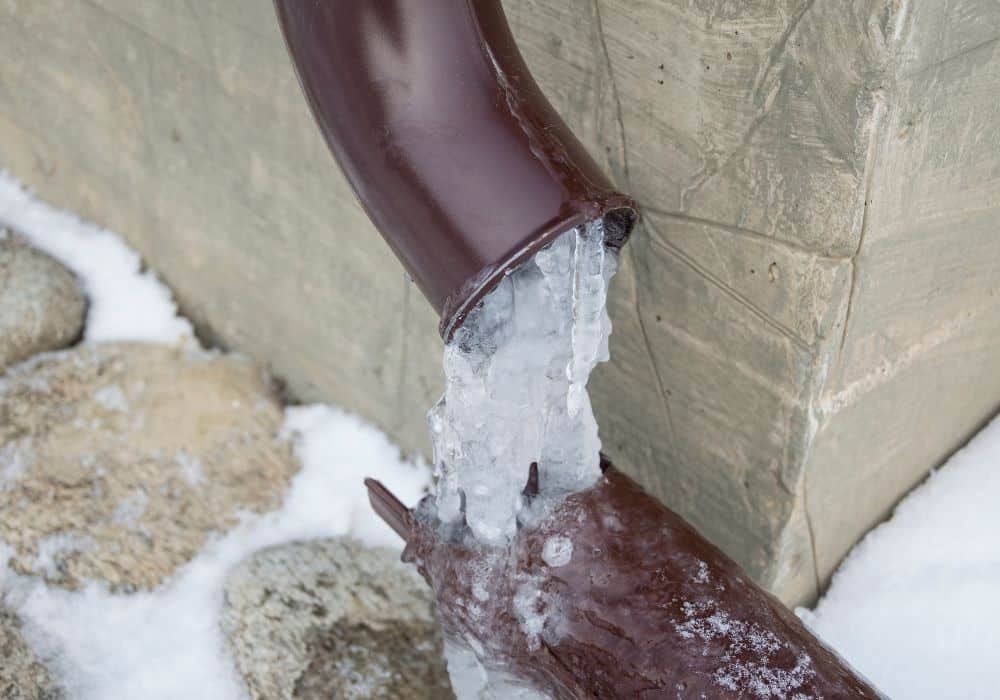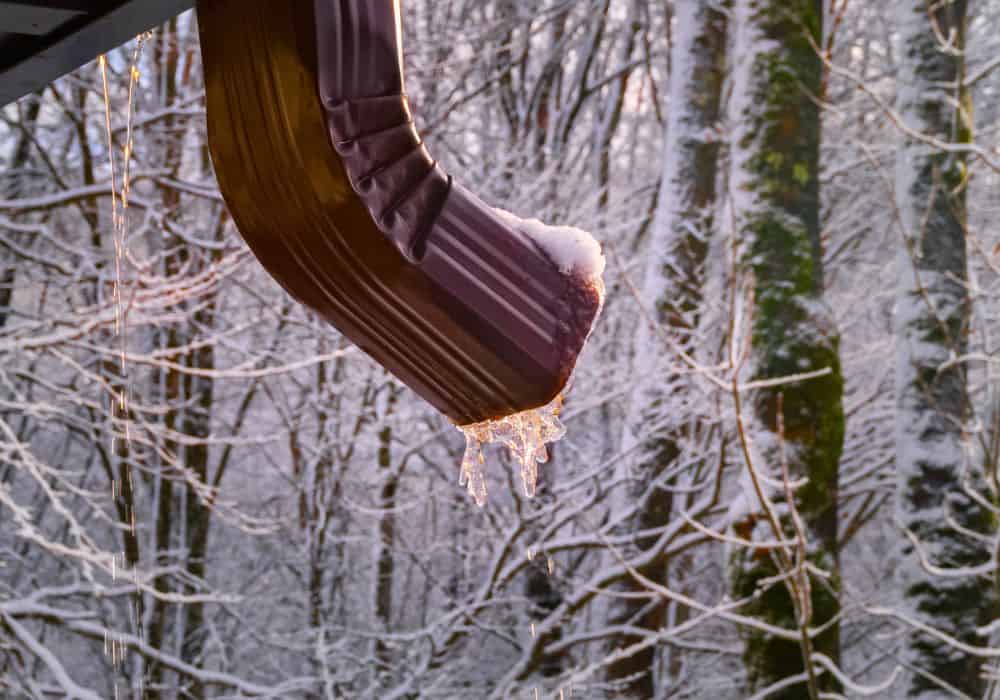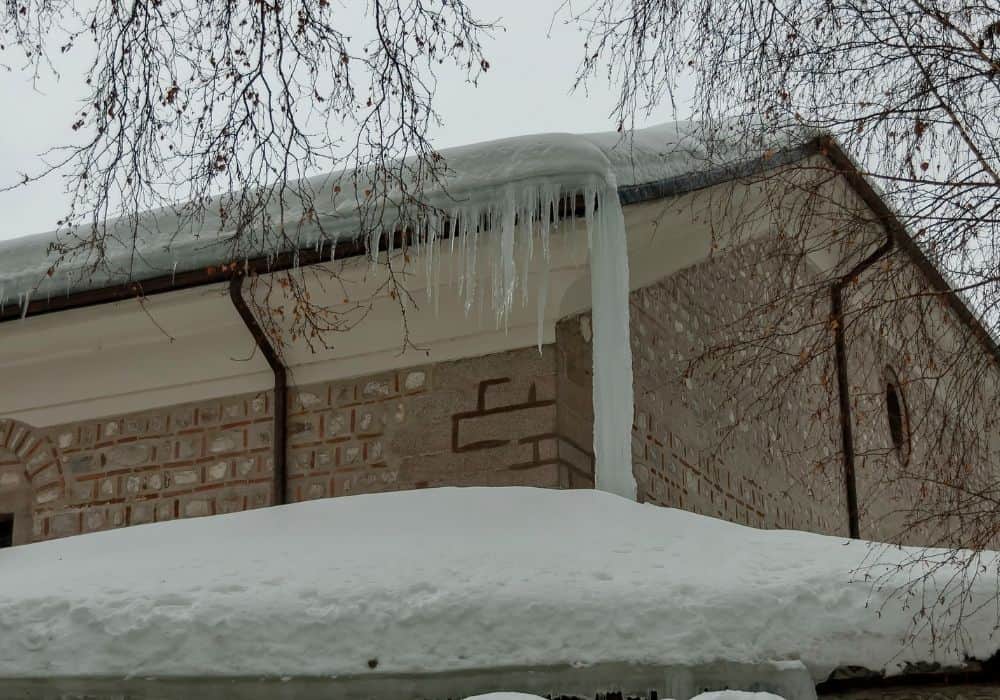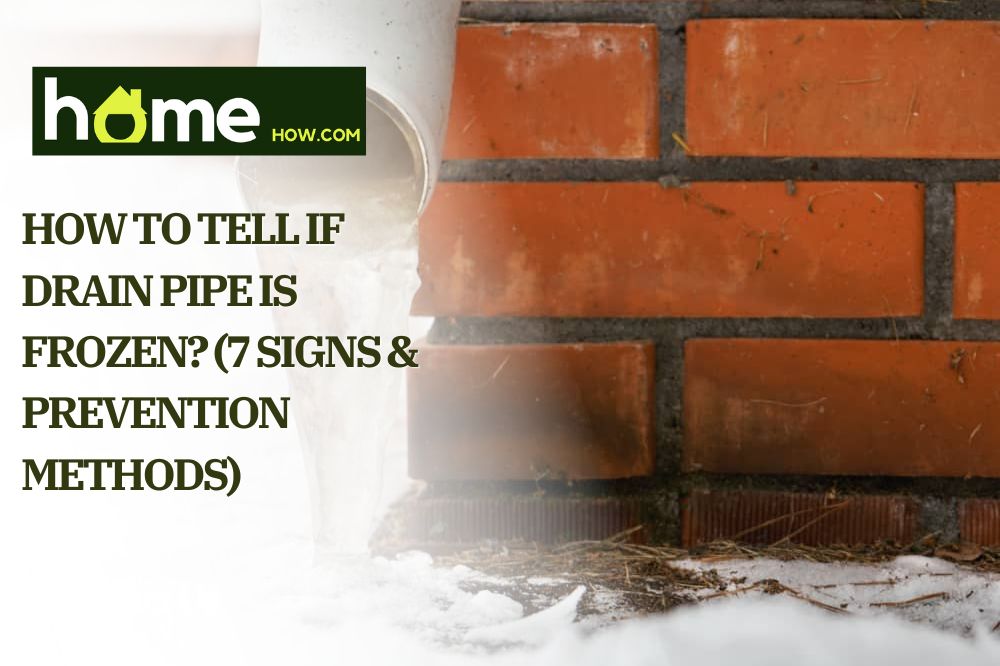When temperatures outside dip below freezing, water in exposed pipes can freeze and result in blockages, or even make pipes burst. It’s one of the biggest plumbing nightmares and can lead to serious damage to your home and require expensive repairs.
During cold weather periods, you have to ensure that your pipes aren’t frozen. In this article, we’re going to cover how to tell if your drain is frozen, how to prevent the pipes from freezing, and what to do if the pipes are already frozen.
The Most Common Signs That Pipes Are Frozen
There are many potential signs showing that pipes are frozen. Here are some of the most common ones:
1. Disturbed Waterflow From the Faucets
The biggest telltale sign that your pipes are frozen is if you’ve noticed a change in the water flow from your faucets. For example, if the water pressure isn’t even, and the water comes out in uneven waves. This is caused by ice buildup in the pipes, which is restricting the water’s flow.
If the water is coming out in a trickle, it’s likely that the pipes are partially frozen. This can still cause damage to the pipes, so it’s important to take measures to thaw the pipes as soon as possible.
2. Water Stops Flowing From the Faucets Entirely
If the water stops flowing from the faucets entirely, it’s likely that the pipes are frozen. This is because the ice has completely blocked the water inside from flowing through the pipes. In some cases, you may be able to hear a faint dripping sound coming from the faucet, which is caused by the water slowly thawing the ice in the pipes.
3. Frost on the Pipes
Another sign that your pipes are frozen is if you can see frost on the pipes. This is most likely to happen if the pipes are exposed, such as in the basement, attics, and crawl space. If you see frost on the pipes, it’s a good idea to take measures to thaw the pipes as soon as possible to prevent them from bursting.

4. Strange Sounds Coming From the Pipes
If you hear strange sounds coming from your pipes, such as cracking, banging, or hissing, it’s a sign that the pipes are frozen. These sounds are caused by the ice expanding and contracting in the pipes
As the ice expands, it puts pressure on the pipes, which can cause them to crack or break. The hissing sound is caused by the escape of air through the cracks in the pipes.
5. Higher Than Usual Water Bills
If you receive a higher-than-usual water bill, it could be a sign that your pipes are frozen. This is because the ice in the pipes can cause them to leak, which results in higher water usage.
6. Flooding, Moisture
If you notice flooding, moisture, or leaks around your home, including interior and exterior walls, it could be a sign that your pipes are frozen. This is because the ice in the pipes can cause them to leak.
Get rid of all the water and moisture as soon as possible. Grab a towel or a mop to dry the area as much as possible to prevent further damage. If you own a water heater or dehumidifier, turn them on in the area where you see moisture or flooding.
Warm air will guarantee that all the moisture is out of the walls, ceilings, or floors.
7. Mold and Mildew Growth
If you notice mold or mildew growth in your home, it could also be a sign that your pipes are frozen. Leaks from frozen pipes can result in mold and mildew growth around the impacted areas.
Mildew and mold can cause significant damage to your property, so it’s a warning sign to act as quickly as possible.
How To Prevent Pipes From Freezing

1. Keep the Temperature in Your Home Consistent
One of the best ways to prevent your pipes from freezing is to keep the temperature in your home consistent. This means setting the thermostat to the same temperature day and night. If you’re going to be away from home for an extended period of time, it’s a good idea to set the thermostat to at least 55 degrees.
2. Insulate Your Pipes
Another way to prevent your pipes from freezing is to insulate them. This is especially important for exposed pipes, such as those in the basement or crawl space. You can purchase pipe insulation at most hardware stores.
There are many different types of insulation to choose from. The most common are mineral wool, glass wool, and elastomeric foam. Mineral wool is made from iron ore waste or slag, glass wool is made from recycled glass, limestone, and ash, and elastomeric foam is made from synthetic rubber and is less common.
Each of these insulating materials has its own pros and cons, but regardless of which you’re going to choose, it can help you to prevent your pipes from getting frozen. To insulate your pipes, simply cut the insulation to size and wrap it around the pipe. Then, secure it with wire ties or electrical tape.
3. Let the Faucets Drip
If the temperature is below freezing, it’s a good idea to let the faucets drip. The trickle of water can help to prevent the water in the pipes from freezing. It’s more difficult for flowing water to freeze compared to still water.
It’s also a good idea to open the cabinet doors under the sink to allow heat to reach the pipes.
4. Keep the Heat on in Your Home
If you’re going to be away from home for an extended period of time, it’s important to keep the heat on in your home. This will help to prevent the pipes from freezing. If you’re gone for more than a few days, it’s a good idea to set the thermostat to at least 10°C (50°F)
5. Seal Any Cracks or Gaps
One of the most common ways that cold air can enter your home is through cracks and gaps. It’s important to seal any cracks or gaps in the walls, doors, or windows to prevent the cold air from coming in. You can use caulking or weather stripping to seal the cracks and gaps.
6. Check on Your Water Heater
It’s important to frequently inspect your water heater, especially during the colder time of the year. If it stops working, your pipes are almost guaranteed to freeze. If the temperatures get incredibly low, increase the heating.
7. Disconnect Garden Hoses
If you have garden hoses attached to your home, it’s important to disconnect them when the cold weather comes. This is because the water in the hoses can freeze and cause the pipes to freeze or burst.
How To Fix Frozen Pipes

1. Use a Hairdryer
One way to repair frozen pipes is to use a hair dryer. Simply direct the hair dryer at the frozen pipe and turn it on to the highest setting. Slowly move the hair dryer back and forth along the pipe until the ice has melted. You can also use a heat lamp to thaw the pipes.
2. Use Hot Water
Another way to repair frozen pipes is to use hot water. Pour a pot of hot water onto the frozen pipe and wait for the ice to melt. You can also use a space heater to thaw the pipes.
3. Use a Pipe Heater
If you have a pipe heater, you can use it to repair frozen pipes, or prevent them from freezing in the first place. They are easy to install, all you have to do is to attach it along the exposed wire and secure it with heat-sensitive tape. It will maintain your pipe warm.
4. Electric Heating Pad
If you have an electric heating pad, you can use it to repair frozen pipes. Simply wrap the heating pad around the frozen pipe, turn it on, and wait for the ice to melt.
5. Use a Blowtorch
If you have a blowtorch, you can use it to repair frozen pipes. Simply aim the flame at the frozen pipe and move it back and forth until the ice has melted. You can also use a propane torch to thaw the pipes.
Keep in mind that using intense heat and open flame on the frozen pipes can damage the pipe, causing it to break or crack. Just be mindful of how much heat you’re applying to the pipe.
Call a Plumber
If you’re not comfortable using any of the methods above, you can always call a plumber. They will have the tools and experience necessary to thaw the frozen pipes quickly and safely.
Conclusion
Frozen pipes can cause you a lot of headaches, so it’s important to know how to tell if pipes in your home are frozen. The most common signs include obstructed water flow from the faucets, increased water bills, and moisture in the walls.
If you have any questions regarding frozen pipes, let us know in the comments!
